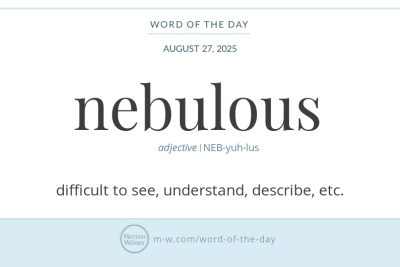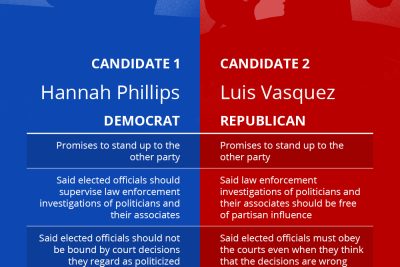
Speak vs. Talk: Understanding the Key Differences Explained

When diving into the nuances of the English language, many learners find themselves stumbling over common verbs such as “speak” and “talk”. While they may appear synonymous at first glance, a closer examination reveals important differences in their usage and context. Understanding these differences can enhance communication skills, allowing speakers to choose the appropriate verb based on their intention and the formality of the conversation. For instance, in a professional setting, one might say, "I need to speak with the team," whereas in casual scenarios, "Let’s talk about it" is often more fitting.
In this comprehensive exploration, we will dissect the key differences between “speak” and “talk”, offering clarity around their meanings, usages, and contextual implications. Whether you're navigating formal conversations or engaging in friendly discussions, knowing when to utilize these verbs can greatly improve your communication proficiency. Read on to uncover the distinctions and practical applications of “speak” and “talk” in the English language.
Understanding the Terms: Speak and Talk
The primary distinction between “speak” and “talk” is the level of formality each conveys. “Speak” is often regarded as more formal and is typically used in structured contexts. For example, one might say, "I speak at the conference next week," which implies a planned and possibly rehearsed presentation of ideas. On the other hand, “talk” is more informal and is often used to describe casual interactions. For instance, saying, "Let’s talk over coffee," indicates a more relaxed atmosphere where ideas can flow freely without the constraints of a formal agenda.
Both terms describe the act of verbalizing thoughts, but their meanings are nuanced by context. When one chooses to talk, it often suggests a back-and-forth interaction, while to speak may imply a one-sided flow of information. This is particularly evident when contemplating the scenarios in which each verb is employed.
Contextual Usage: When to Use Each Verb
Knowing when to use “speak” or “talk” can significantly enhance the clarity of your message. “Speak” is commonly used in situations that require a certain level of seriousness or formality. For example, during an interview or when giving a speech, you might say, "I will speak with the interviewer about my qualifications." Alternatively, “talk” fits better in informal settings or extended discussions, such as, "We can talk about our plans for the weekend." Understanding the context not only conveys your message but also sets the tone for your interaction.
Understanding Direct Address
Moreover, “speak” can introduce a direct dialogue with the listener or an audience, especially in formal contexts. For instance, in a business meeting, one might say, "Let me speak to you about our strategy," thus indicating a one-way delivery of important information. Conversely, using “talk” in this scenario might imply a more collaborative discussion, as in, "Let’s talk about the challenges we’re facing," encouraging participation and input from all attendees.
Formality Differences: Speak vs. Talk
The formality associated with “speak” and “talk” is crucial for effective communication. In academic or professional environments, “speak” may be preferred due to its more polished connotation. For example, phrases such as "I would like to speak to my professor about my research" demonstrate an appropriate level of respect and professionalism. “Talk”, conversely, is suited for everyday conversations among friends or family. A statement such as "Can we talk about your day?" fits naturally in a casual context.
The Impact of Tone
The tone inherent in using either verb can also influence how messages are perceived. A “speak” implies a more serious tone, often commanding attention and respect. When someone says, "I need to speak with you," it can evoke a sense of urgency, suggesting that the matter at hand is important. In contrast, when using “talk,” the tone remains light and approachable, inviting open conversation. Thus, selecting the correct verb can shape the listener's response and the overall atmosphere of the exchange.
Language-Specific Uses: The Uniqueness of 'Speak'
Another interesting aspect to consider is how “speak” interacts with language in a way that “talk” does not. For example, one might say, "I speak Spanish fluently." In this instance, “speak” is the only verb that fits appropriately before a language, highlighting its unique role in discussions about linguistic capability. This allows the speaker to convey proficiency in specific languages, emphasizing a formal connection to the act of verbal expression.
Common Scenarios for 'Talk'
“Talk” tends to be more prevalent in informal settings, making it ideal for a myriad of everyday situations. Whether catching up with friends, having heart-to-heart conversations, or negotiating minor disagreements, “talk” is the go-to verb. For instance, you might say, "Let’s talk about what happened today," indicating a casual and open environment where feelings and thoughts can be shared without reservation.
Recognizing Informal Situations
In a situation where the speaker does not intend to deliver serious or significant content, “talk” truly shines. Take, for example, a gathering among friends after a long week: "I just want to talk and relax with you all." Using this verb captures the essence of the moment, highlighting a relaxed and friendly atmosphere conducive to personal connections.
Nuances in Communication: What Each Verb Conveys
Both “speak” and “talk” convey verbal communication, yet they carry different implications regarding intent, formality, and depth. When one speak during a presentation, it expresses authority over the subject and often a desire to educate or inform listeners. On the other hand, “talk” suggests an invitation for dialogue and reciprocity, where not only ideas are exchanged but personal insights and nuances become part of the conversation.
Encouraging Engagement
Using “talk” engenders a sense of camaraderie, encouraging the other party to engage fully in the conversation. A phrase like "Can we talk about the project?" suggests an openness to input and feedback, fostering collaborative problem-solving. Alternatively, stating, "I will speak on this topic," places the speaker in a more dominant position, implying a clear intention to guide the discourse.
Conclusion: Choosing the Right Verb for Your Message
Understanding the differences between “speak” and “talk” is essential for effective communication. Whether in professional settings or casual conversations, the choice between these verbs impacts not just your tone but also the way your message is received. To enhance communication skills, consider the formality of the environment, the intent behind the message, and the nature of the conversation. Remember that while both verbs entail verbal interaction, each conveys unique connotations that can influence your audience’s understanding.
As you continue to refine your command of the English language, keep in mind the contexts that warrant “speak” versus “talk.” By choosing the right verb for your message, you cultivate a clearer dialogue, foster deeper connections, and enhance the overall effectiveness of your communication skills.
Did you find this article helpful? Speak vs. Talk: Understanding the Key Differences Explained See more here Education.
Leave a Reply






Related posts